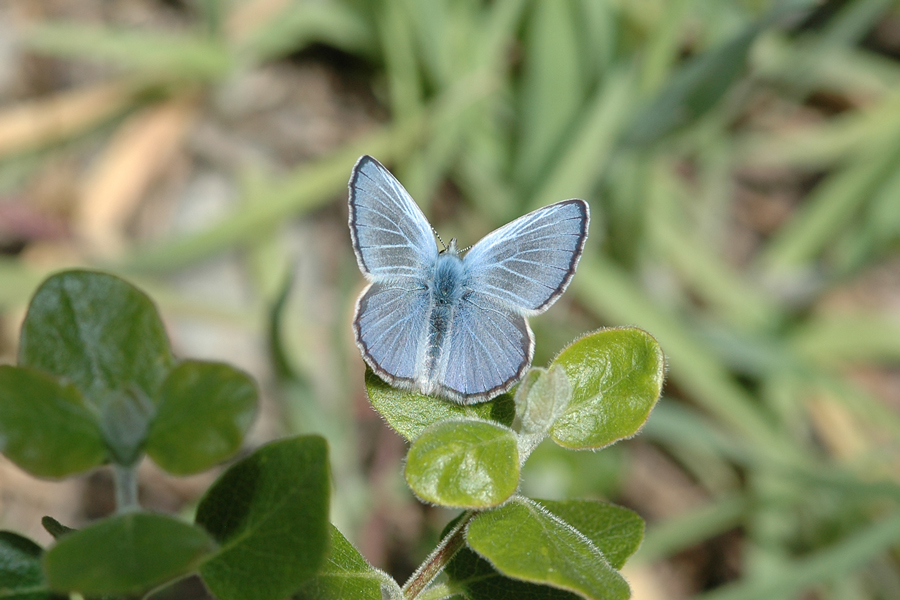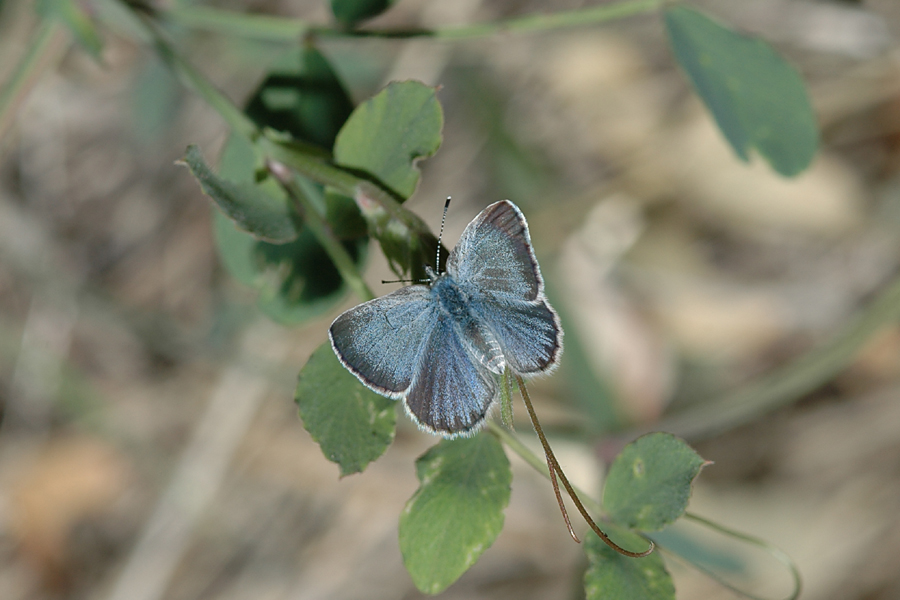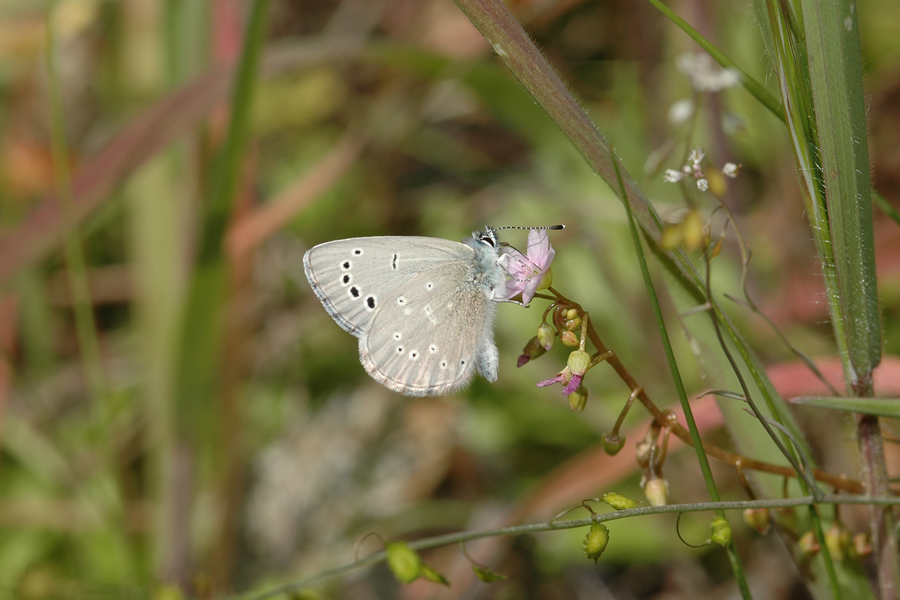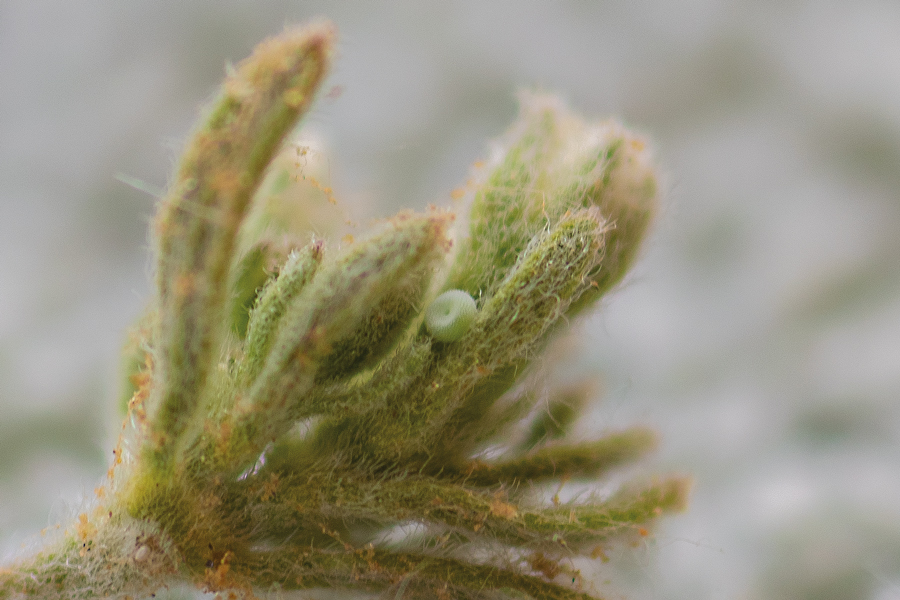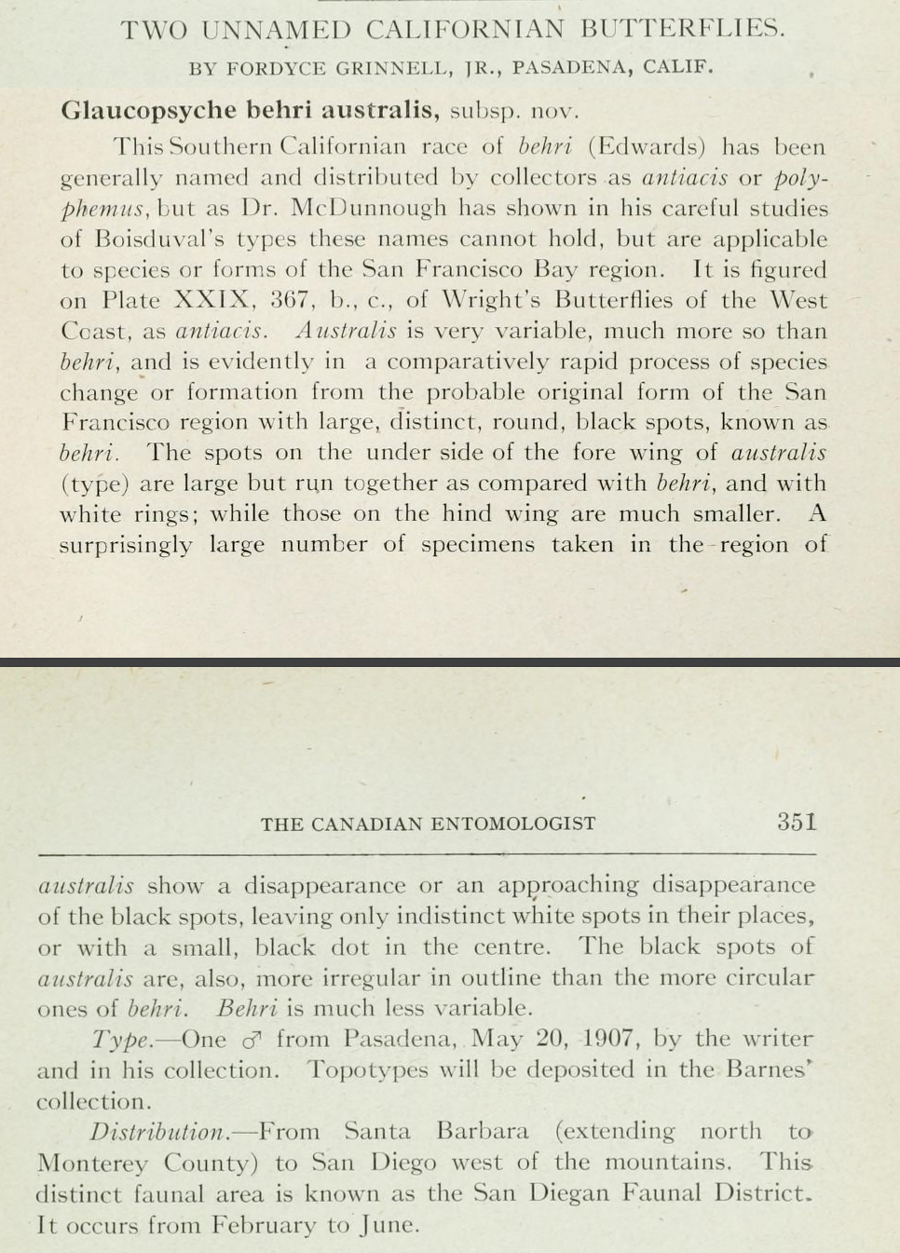Glaucopsyche lygdamus australis
'Southern' Silvery Blue
If you encounter a silvery blue butterfly in southern California, chances are good it is subspecies australis. Exceptions are populations in San Luis Obispo Co. (sabulosa, incognitus); on Santa Rosa Island (pseudoxerces); in the eastern Mojave desert ranges (deserticola); or on the Palos Verdes Peninsula (palosverdesensis). If you're in the southern Sierra Nevada mountains, there are populations that may merit naming in the future. So this means that what I've seen in the mountains of Santa Barbara Co., in the Santa Monica and San Gabriel Mountains, down into Riverside and San Diego counties, are all australis.
The silvery blue is single-brooded, with an early flight (usually February to April). The usual host is deerweed - Acmispon glaber (formerly Lotus scoparius) - which is common in cismontane southern California. Larvae - which may be ant-attended - feed on the plant and then leave it to overwinter as pupae. Along the coast, butterflies may emerge surprisingly early if conditions are right: I photographed a fresh male in Pt. Mugu State Park in Ventura Co. on January 12, 2006.
